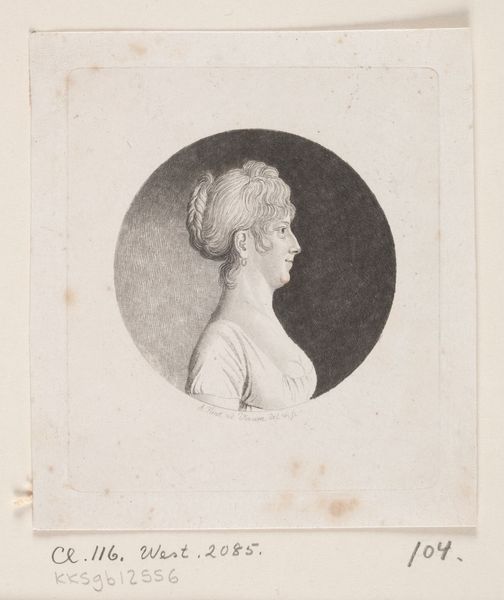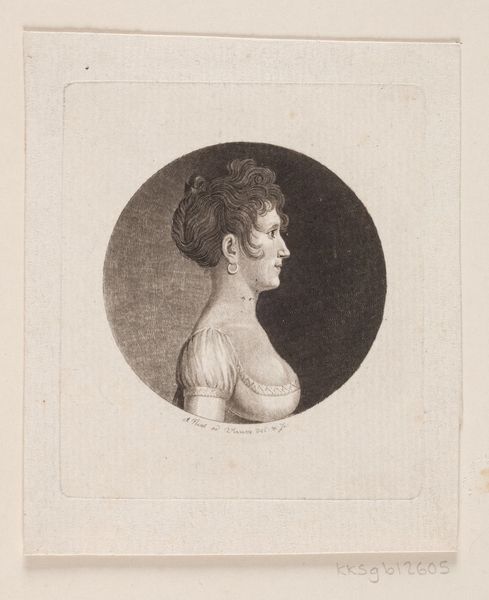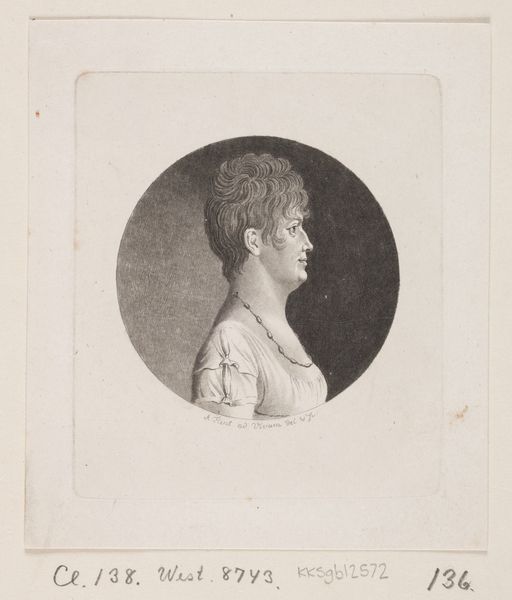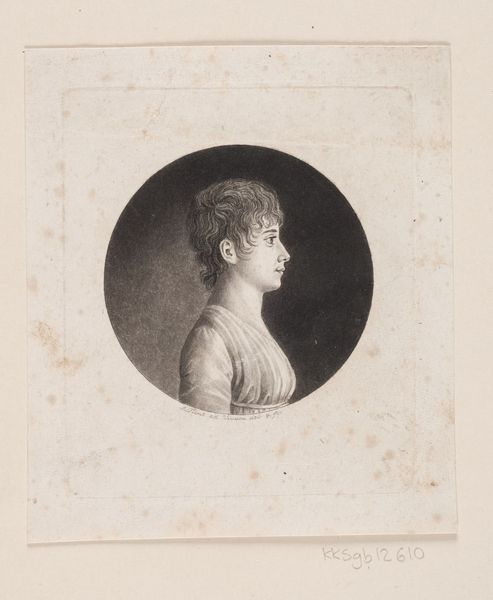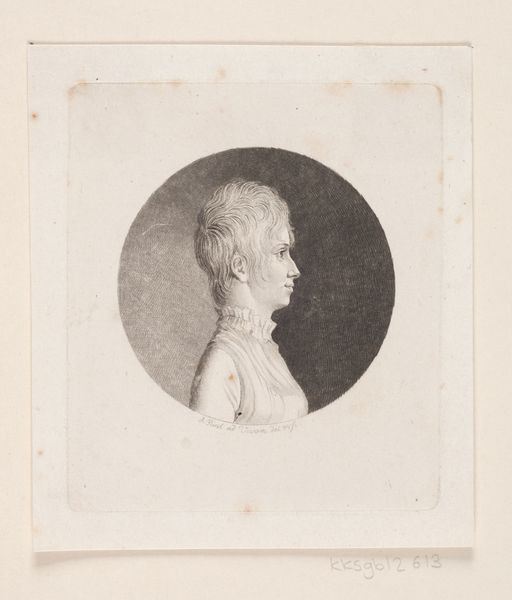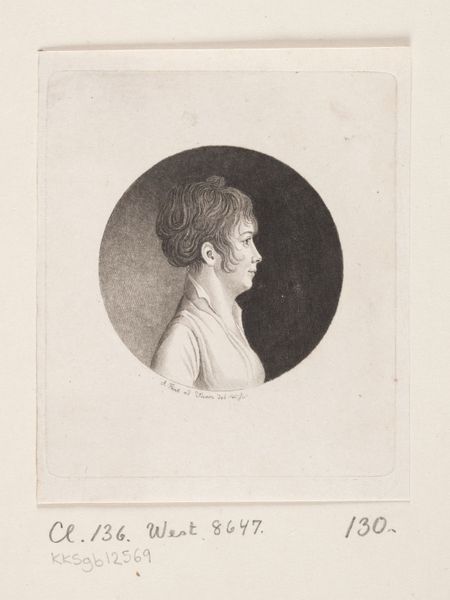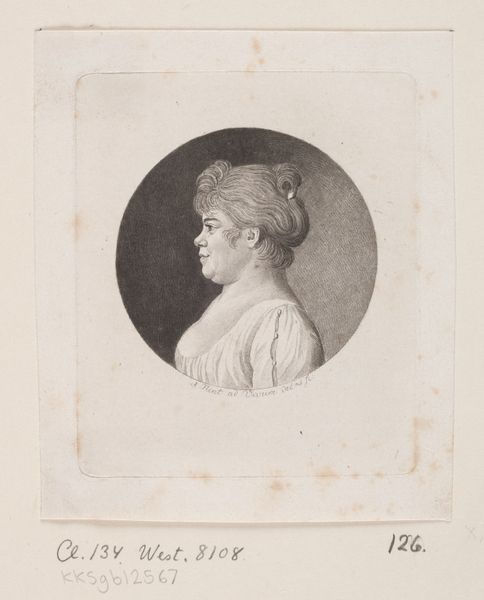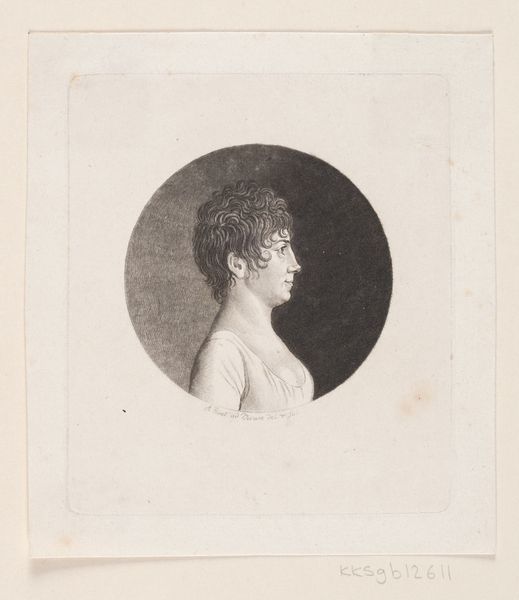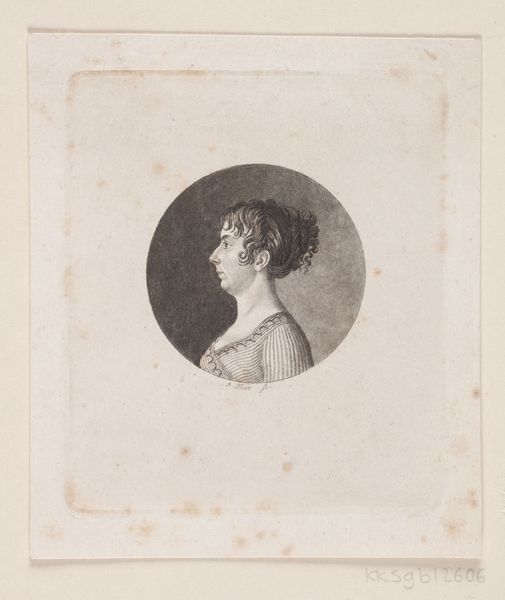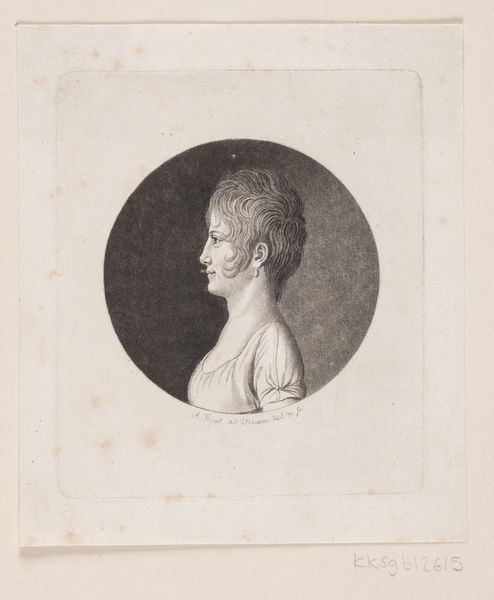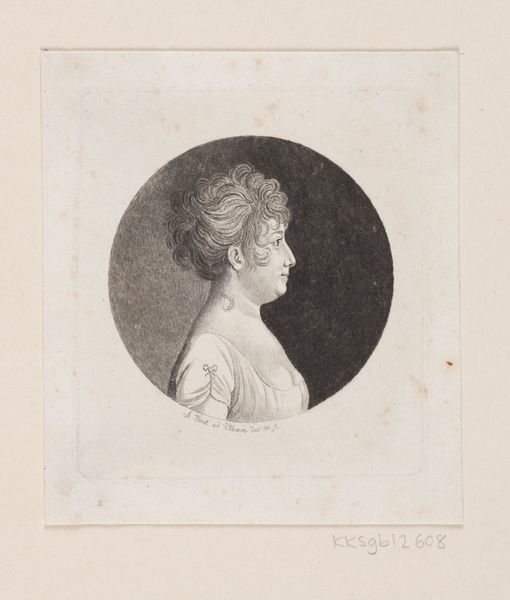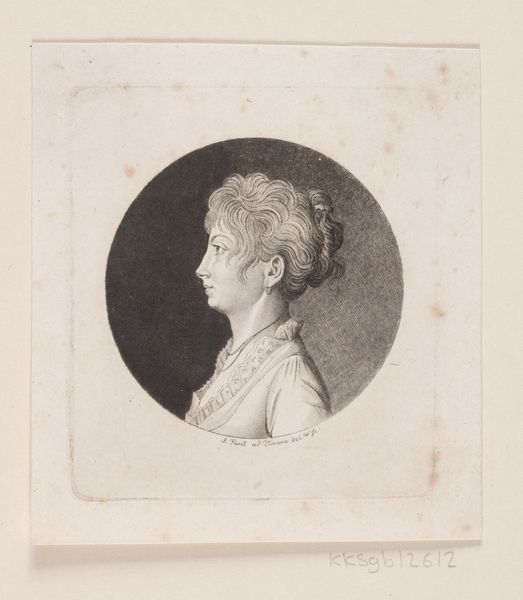
drawing, print, pencil, engraving
#
portrait
#
pencil drawn
#
drawing
#
neoclacissism
# print
#
pencil drawing
#
pencil
#
engraving
Dimensions: 60 mm (None) (billedmaal), 83 mm (height) x 74 mm (width) (plademaal)
Curator: Here we have Andreas Flint’s engraving of Anne Cathrine Fugl, dating from between 1767 and 1824. What are your initial impressions? Editor: Austere. There’s a remarkable simplicity to it. The tight, dark background concentrates all the attention onto her pale face, neck and shoulders, framed by a crisp white garment. The contrast is almost stark. You immediately see the crispness of the engraving's fine lines too, don’t you? Curator: Indeed. Knowing it was produced during the neoclassical period really emphasizes the controlled, almost stoic representation of Fugl. The profile view was favored at the time, evoking ancient Roman portraiture and ideals of rationality. But what do we really know about her? Who was this woman? Editor: Good question. Thinking materially, the engraving would’ve been created from a metal plate, and such an intricate design suggests skilled labor. But beyond that, the very process implies dissemination. So, we can assume that this portrait functioned beyond a mere commemorative image. Curator: Absolutely, engravings like these were integral to constructing and circulating images of social and political figures. The very act of replicating and sharing her likeness through prints solidifies Fugl's identity and place in a particular societal circle. Considering Andreas Flint’s position and influence, how do you think he approached the materials in relation to Fugl's social identity? Editor: The engraver would be quite conscious of his patron's or subject's class because the choice of medium and style directly influences its reach. This precision tells me it wasn't for mass distribution, maybe for a niche academic or aristocratic clientele. I see a relationship between social status, the labor of its creation, and the means for its distribution. Curator: Yes, so there is the confluence of identity, gender, and class all embedded in this seemingly straightforward portrait. It serves as a reminder that even seemingly objective representations are constructed and mediated through social power. And while we’re distanced by time, it reflects how our modern-day ideas and attitudes impact our perspective when assessing such artworks. Editor: I agree. Examining the process of production and how the image might have been used forces us to consider the human relationships surrounding this image, the relationship between the engraver, his tools and the subject depicted. I find myself asking how Fugl felt being represented this way. Curator: Precisely, that’s something for all of us to ponder when regarding Anne Cathrine Fugl. Editor: Indeed. Thank you for sharing your perspective!
Comments
No comments
Be the first to comment and join the conversation on the ultimate creative platform.

